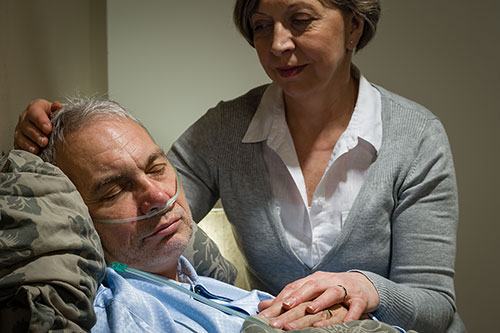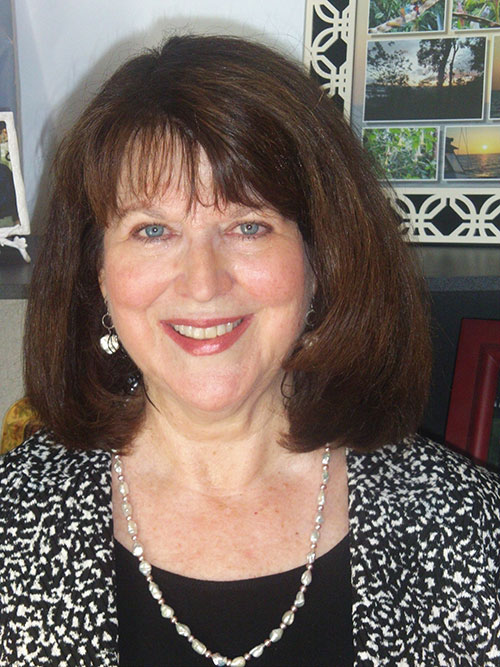
Palliative care consults reduce the use of hospitalization and other forms of intensive care in the last several months of life, according to a Brown University-led study of more than 1,500 nursing home residents in Rhode Island and North Carolina.
Graphicstock
PROVIDENCE, R.I. [Brown University] —Many people, when they hear “palliative care,” may think of hospice. But over the last 15 years, another practice has emerged for people who aren’t ready for that ultimate step: palliative care consults. Early research has suggested that palliative care specialists help patients in hospital or outpatient settings get better control of pain and other symptoms while opting for less intensive care. Now the first study of the effect of palliative care consults in nursing homes finds that the practice is associated with less hospitalization and intensive treatment.
Moreover, the study of more than 1,500 people in Rhode Island and North Carolina finds these benefits accrued at no net additional cost to Medicare.
“These findings have never been shown in nursing homes,” said study corresponding author Susan Miller, a Brown University gerontologist and School of Public Health professor. “It’s important that we document this because essentially when people are in the nursing home for a long stay, that’s their final residence. These are people in need of supportive care and expertise in palliative care.”
The results appear in the Journal of the American Geriatrics Society.
Different than hospice
Expert nurse practitioners under the supervision of palliative care specialist physicians provided the palliative care consults. There are many reasons, Miller said, why nursing home residents might benefit more — at least initially — from such visits rather than hospice care, though many eventually go on to hospice.
Enrolling in Medicare’s hospice benefit requires a doctor’s prognosis of likely death within six months and also requires that patients forgo hospitalization or skilled nursing Medicare benefits. Many frail older people living in nursing homes have serious illnesses that aren’t clearly terminal. They can use consults to access palliative care — symptom management, spiritual and emotional support, and end-of-life care planning — without having to waive other medical benefits or acknowledge their life expectancy may be only months.
Because they are not a distinct benefit under Medicare, palliative consults are typically billed as regular nursing home visits (under Medicare Part B). That degree of remuneration for providers — often affiliates of hospice organizations — is not enough to have made the service widespread, Miller said.
The study used data from health care providers who realized this type of care might be helpful to nursing home residents and made information available. As early as 2006 to 2010, consult data was therefore available for residents in the 46 nursing homes in two states included in the study. In all, 10 percent of residents made use of palliative care consults.

"When people are in the nursing home for a long stay, that’s their final residence. These are people in need of supportive care and expertise in palliative care."
Image: John Roberts
To assess what impact the consults had on the care of nursing home residents, Miller and her colleagues examined resident health assessments and Medicare claims to determine what kind of care they received in the 180 days before they died. In all, the study compared the care received by 477 consult recipients and 1,174 other matched nursing home residents who were very similar, except that they did not receive consults.
The study controlled for many potentially confounding factors between the groups such as age, race, gender, initial health status and characteristics of the nursing home. The study also accounted for residents’ baseline end-of-life care preferences.
Major impact on hospitalization
The study found that palliative care consults not only reduced hospitalizations and other end-of-life potentially burdensome transitions, but also did so to a larger degree when palliative care specialists were engaged earlier. For example, among people who received their first consult eight to 30 days before death, the statistically adjusted rate of hospitalization in the last week of life was 11.1 percent, compared to 22 percent for people who did not receive consults. But for people whose first consult occurred 61 to 180 days before death, the hospitalization rate in the last week of life was only 6.9 percent, compared to 22.9 percent for controls who did not receive consults.
“I wasn’t surprised that we saw differences, but we saw very large differences,” Miller said. “That was surprising.”
The study also documented some statistically significant reductions in emergency room visits, though the differences were less dramatic than for hospitalizations. The burdensome transition rate was 50 percent lower for residents with consults compared to those without consults (16.2 percent versus 28.2 percent) when consults were 61 to 180 days before death; but differences were negligible, Miller said, when consults were closer to death.
The researchers also studied the relative costs of care in time periods after the first consult until death. Costs were very similar between patients that received or didn’t receive consults for the last 60 or 30 days of life. Within the last week of life, costs were significantly lower for some of those who received consults vs. those who didn’t — both those who received one in the last week ($6,365 vs. $9,243) and those who received one 61 to 180 days before dying ($3,097 vs. $4,140).
Should it be a benefit?
It may not seem obvious, Miller acknowledged, that less frequent hospitalization is better for patients, especially people with chronic conditions who live in nursing homes. But transitions between settings are physically and emotionally stressful for frail patients, and hospitalization comes with risks such as new medication side effects, exposure to resistant bacteria and complications from procedures.
“Further, studies have shown that many common nursing home problems such as infections can be treated on site with the same or better results for patients,” she said.
The observations in the study suggest that palliative care consults resulted in better care at no net cost to Medicare, Miller said, but a more precise test would be a large randomized controlled trial in which consults are treated as a specific Medicare benefit. That would help researchers and funders get a better understanding of whether consults improve care, who seeks them, and how providing them could affect costs.
Raising reimbursement rates for palliative care providers to expand access to the service might cost Medicare more, Miller said, but not necessarily if it affects how care is delivered and used and changes when people enroll in hospice.
“There are a lot of things that we need to consider,” she said. “If we had payment for this and there were more people providing it there would be greater access and maybe different people using it.”
The paper’s other authors are Julie Lima, Orna Intrator, Dr. Edward Martin, Dr. Janet Bull and Dr. Laura Hanson.
The National Institute on Aging funded the research (grant: R21AG042550).